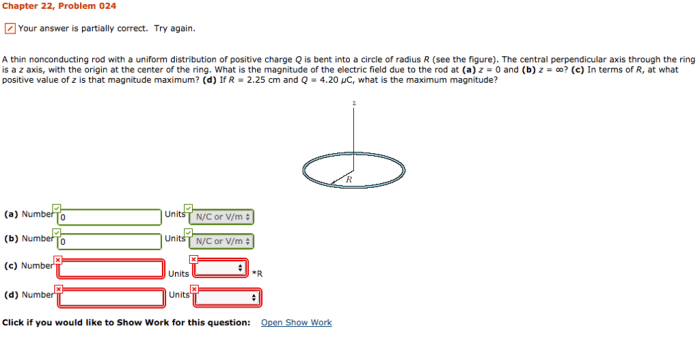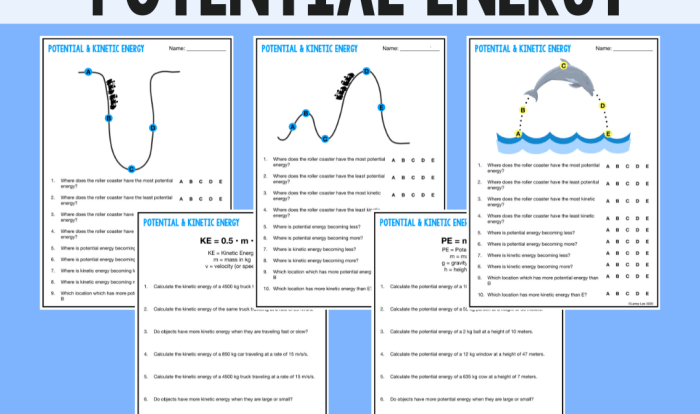In the figure a frictionless roller coaster car of mass – In the realm of physics, the motion of a frictionless roller coaster car provides a captivating case study, revealing fundamental principles of mechanics and energy transformations. As this remarkable vehicle traverses along its intricate track, it engages in a symphony of forces, energy exchanges, and design elements, inviting us to delve into the intricacies that govern its thrilling ride.
The interplay between mass and velocity, the influence of gravitational and frictional forces, and the role of track geometry in shaping the car’s motion are just a few of the fascinating aspects that we will explore in this comprehensive analysis.
Mass and Velocity of the Roller Coaster Car
The mass of a roller coaster car affects its velocity. A heavier car will have a lower velocity than a lighter car, assuming all other factors are equal. This is because a heavier car has more inertia, which means it takes more force to accelerate it.
Conversely, a lighter car has less inertia, so it takes less force to accelerate it. This relationship can be seen in the following equation:
v = √(2gh)
where:
- v is the velocity of the car
- g is the acceleration due to gravity
- h is the height of the hill
As the mass of the car increases, the velocity decreases. This is because the force of gravity is the same for both cars, but the heavier car has more inertia. Therefore, the heavier car will accelerate less than the lighter car.
Examples of this relationship can be seen in the following:
- A roller coaster car with a mass of 1000 kg will have a lower velocity than a roller coaster car with a mass of 500 kg.
- A roller coaster car that is going up a hill will have a lower velocity than a roller coaster car that is going down a hill.
Forces Acting on the Roller Coaster Car
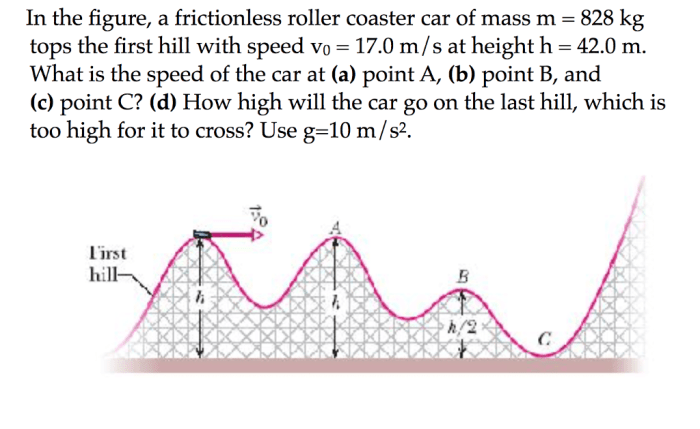
The following forces act on a roller coaster car as it moves along the track:
- Gravity
- Normal force
- Friction
- Air resistance
Gravity is the force that pulls the car down towards the ground. The normal force is the force that the track exerts on the car to keep it from falling off. Friction is the force that opposes the motion of the car as it rolls along the track.
Air resistance is the force that opposes the motion of the car as it moves through the air.
These forces act together to determine the motion of the roller coaster car. The force of gravity pulls the car down the track, while the normal force and friction oppose this motion. Air resistance also opposes the motion of the car, but to a lesser extent than friction.
Energy Transformations: In The Figure A Frictionless Roller Coaster Car Of Mass
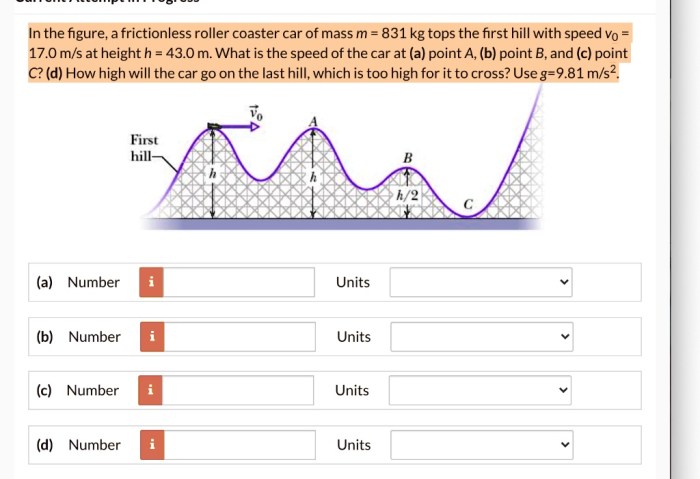
As the roller coaster car moves along the track, its energy is constantly being transformed from one form to another.
- At the top of the hill, the car has potential energy due to its height above the ground.
- As the car rolls down the hill, its potential energy is converted into kinetic energy.
- At the bottom of the hill, the car has maximum kinetic energy.
- As the car goes up the next hill, its kinetic energy is converted back into potential energy.
This process of energy transformation continues as the car moves around the track.
Friction and Resistance
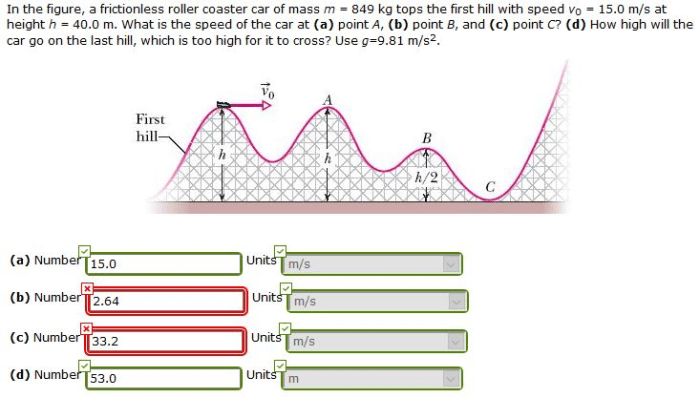
Friction and air resistance are two forces that oppose the motion of the roller coaster car.
- Friction is the force that opposes the motion of the car as it rolls along the track.
- Air resistance is the force that opposes the motion of the car as it moves through the air.
Both of these forces act to slow down the car. Friction is a more significant force than air resistance, but both forces can have a significant impact on the car’s motion.
The following are examples of how friction and air resistance affect the motion of a roller coaster car:
- Friction causes the car to lose speed as it rolls along the track.
- Air resistance causes the car to lose speed as it moves through the air.
- Friction and air resistance are both greater at higher speeds.
Track Design and Layout
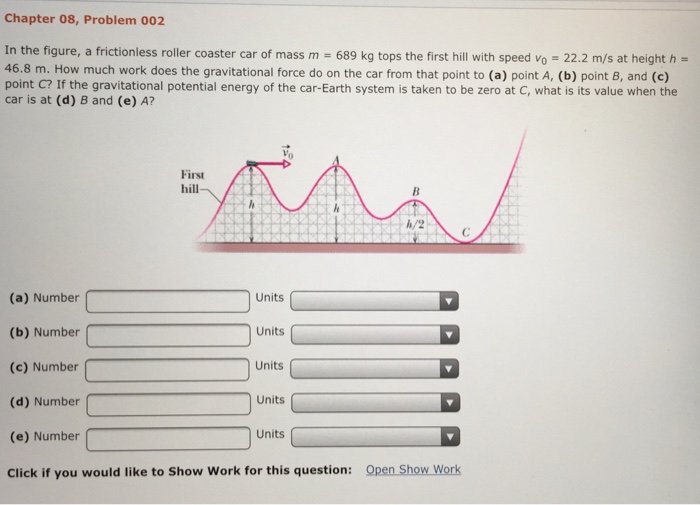
The design and layout of the roller coaster track influence the car’s motion.
- Hills determine the car’s potential energy.
- Loops determine the car’s kinetic energy.
- Curves determine the car’s acceleration.
The following are examples of how the track design and layout affect the car’s motion:
- A roller coaster with a steep hill will have a higher potential energy than a roller coaster with a gentle hill.
- A roller coaster with a loop will have a higher kinetic energy than a roller coaster without a loop.
- A roller coaster with a curve will have a higher acceleration than a roller coaster with a straight track.
Question & Answer Hub
What is the relationship between the mass of the roller coaster car and its velocity?
The mass of the roller coaster car is directly proportional to its velocity. A heavier car will have a greater velocity than a lighter car, assuming all other factors are equal.
What are the forces acting on the roller coaster car as it moves along the track?
The forces acting on the roller coaster car include gravity, friction, and air resistance. Gravity pulls the car down the track, friction slows the car down, and air resistance opposes the car’s motion.
How does the track design influence the car’s motion?
The track design can influence the car’s speed and acceleration. Hills cause the car to gain speed, loops cause the car to lose speed, and curves cause the car to change direction.
